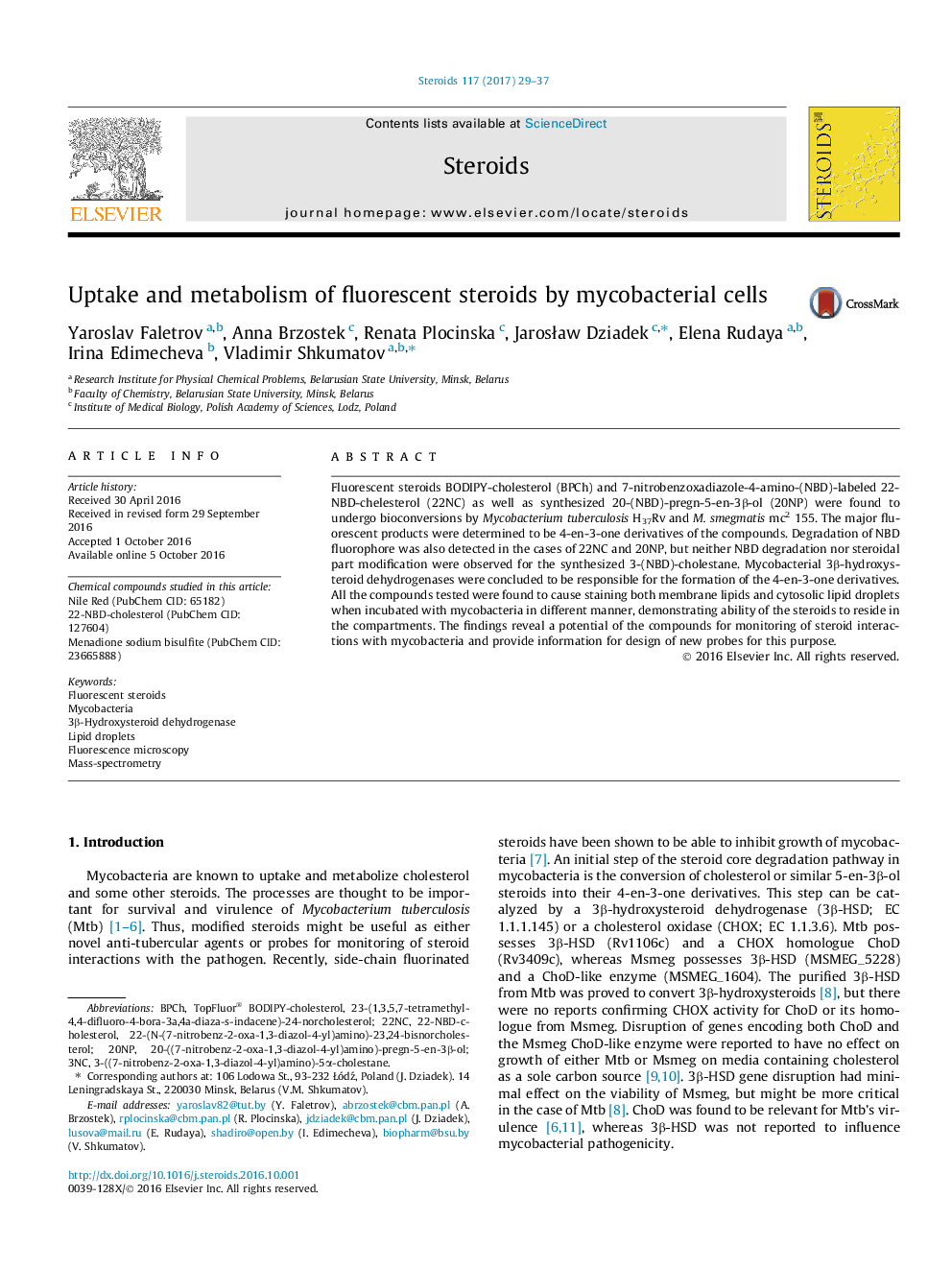| Article ID | Journal | Published Year | Pages | File Type |
|---|---|---|---|---|
| 5516685 | Steroids | 2017 | 9 Pages |
â¢Mycobacteria can convert BODIPY-cholesterol and similar NBD-labeled steroids.â¢4-En-3-one derivatives are major fluorescent products of the bioconversion.â¢NBD fluorophore of the compounds undergoes degradation in the mycobacteria.â¢The steroids cause staining of envelope lipids and intracellular lipid droplets.â¢3-NBD-cholestane don't converted by M. tuberculosis H37Rv and M. smegmatis mc2 155.
Fluorescent steroids BODIPY-cholesterol (BPCh) and 7-nitrobenzoxadiazole-4-amino-(NBD)-labeled 22-NBD-chelesterol (22NC) as well as synthesized 20-(NBD)-pregn-5-en-3β-ol (20NP) were found to undergo bioconversions by Mycobacterium tuberculosis H37Rv and M. smegmatis mc2 155. The major fluorescent products were determined to be 4-en-3-one derivatives of the compounds. Degradation of NBD fluorophore was also detected in the cases of 22NC and 20NP, but neither NBD degradation nor steroidal part modification were observed for the synthesized 3-(NBD)-cholestane. Mycobacterial 3β-hydroxysteroid dehydrogenases were concluded to be responsible for the formation of the 4-en-3-one derivatives. All the compounds tested were found to cause staining both membrane lipids and cytosolic lipid droplets when incubated with mycobacteria in different manner, demonstrating ability of the steroids to reside in the compartments. The findings reveal a potential of the compounds for monitoring of steroid interactions with mycobacteria and provide information for design of new probes for this purpose.
